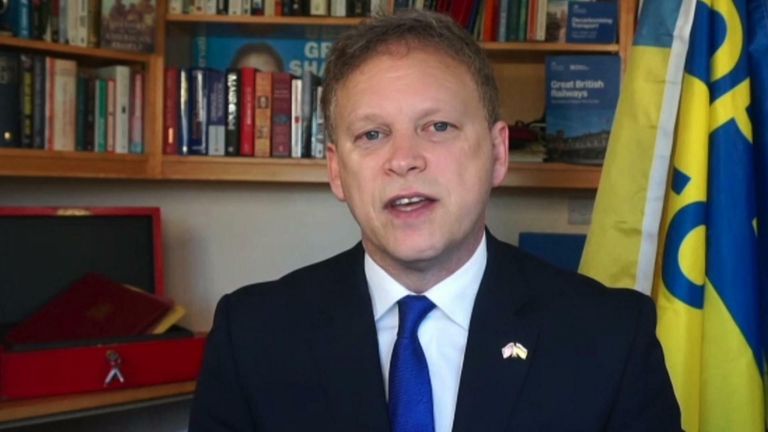Britain is to step up its development of nuclear power under plans to boost the country’s long term energy security while delivering thousands of jobs and cheaper bills.
The government said up to eight reactors could be delivered by 2030 – accelerating the pace from one a decade to one a year – as the UK looks to move away from oil and gas and protect itself from price volatility.
Its ambition is for up to 24GW to come from the “safe, clean and reliable source of power” by 2050, about 25% of expected demand, with a fleet of smaller reactors forming a key part of the pipeline.
Offshore wind, solar and hydrogen also form part of the plan, which targets 95% of electricity being low carbon by 2030.
But oil and gas are also still being relied on, with a new licensing round for North Sea projects to launch this summer – recognising the importance of these fuels to energy security and that producing gas in the UK has a lower carbon footprint than doing so abroad, the government said.
Boris Johnson said the “bold plans” would see Britain “scale up and accelerate affordable, clean and secure energy made in Britain, for Britain – from new nuclear to offshore wind – in the decade ahead”.
“This will reduce our dependence on power sources exposed to volatile international prices we cannot control, so we can enjoy greater energy self-sufficiency with cheaper bills,” the prime minister said.
But Labour claimed the strategy – whose launch has been delayed amid reported push-back from the Treasury – was in “disarray” as it lacked action on onshore wind and no new help to boost energy efficiency.
The focus on nuclear would build on the development of Hinkley Point C in Somerset, currently under construction, and talks to develop Sizewell C in Suffolk – between them set to generate 6.5GW of power.
A new body, Great British Nuclear, is being set up to bring forward the development of new sites, backed by “substantial funding”, while a £120m “future nuclear enabling fund” is to be launched this month.
The government said it would work to kick off a series of projects as soon as possible, including at Wylfa in Anglesey.
On offshore wind, the strategy targets up to 50GW of capacity by 2030, which it says is more than enough to power every home in the UK, and would include 5GW from floating offshore wind in deeper seas – underpinned by planning reforms to speed up their development.
For onshore windfarms – which were recently described as “eyesores” by one cabinet member – there will be a consultation on “partnerships with a limited number of supportive communities” for the building of turbines in exchange for guaranteed lower energy bills.
The government will also look at reforming rules for installing solar panels on homes and commercial buildings, with an aim to see the current solar capacity of 14GW grow up to five times by 2035.
A target for low carbon hydrogen production capacity is being doubled to 10GW by 2030, with the aim to provide cleaner energy for industry as well as for power, transport and potentially heating.
There will also be a £30m “heat pump investment accelerator competition” to make British heat pumps – an alternative to gas boilers.
The government said the plan had been created in the face of rising global energy prices – attributed to demand bouncing back after pandemic lockdowns as well as Russia’s invasion of Ukraine.
Business and Energy Secretary Kwasi Kwarteng said: “We need to protect ourselves from price spikes in the future by accelerating our move towards cleaner, cheaper, home-grown energy.
“The simple truth is that the more cheap, clean power we generate within our borders, the less exposed we will be to eye watering fossil fuel prices set by global markets we can’t control.
“Scaling up cheap renewables and new nuclear, while maximising North Sea production, is the best and only way to ensure our energy independence over the coming years.”
Consumer bills will be lower this decade than they otherwise would be as a result of the government’s measures, it said.
The government also said the strategy would mean 40,000 extra jobs.
Fracking did not form part of the strategy’s headline announcements – though earlier this week the UK commissioned a survey into the industry following a moratorium in place since 2019.
Meanwhile, the Treasury is understood to have blocked a proposal to expand a scheme to upgrade household insulation and energy efficiency.
Ed Miliband, Labour’s shadow climate secretary, said: “The government’s energy relaunch is in disarray.”
He said the plan “has failed on the sprint we needed on onshore wind and solar – the cheapest, cleanest forms of homegrown power”.
“This relaunch will do nothing for the millions of families now facing an energy bills crisis,” Mr Miliband added.
“No reversal of the ban on onshore wind and not a penny more on energy efficiency.”
The CBI said the strategy “sets an ambitious bar for a more resilient, low carbon energy system for the future” but also said businesses needed help with soaring bills now.



